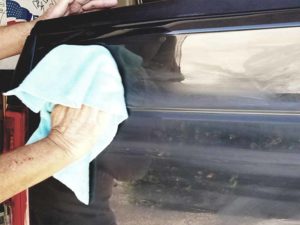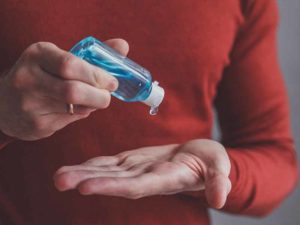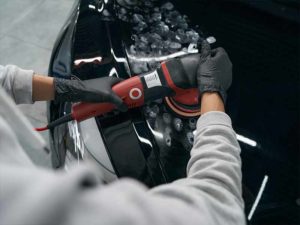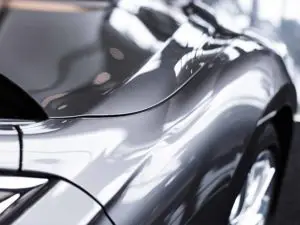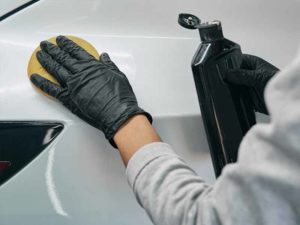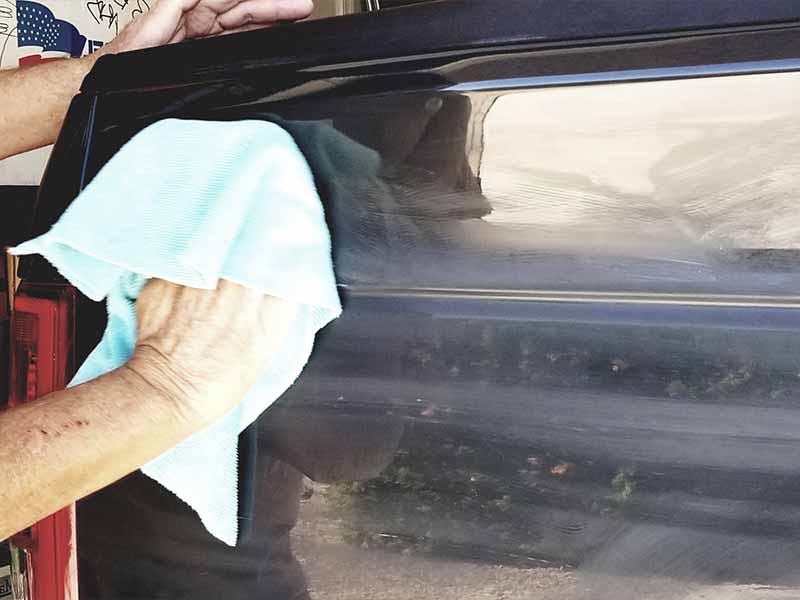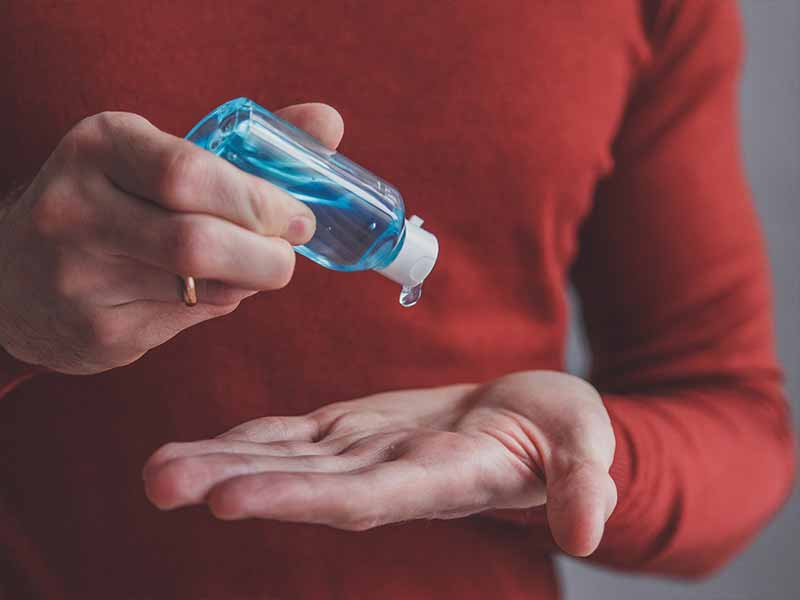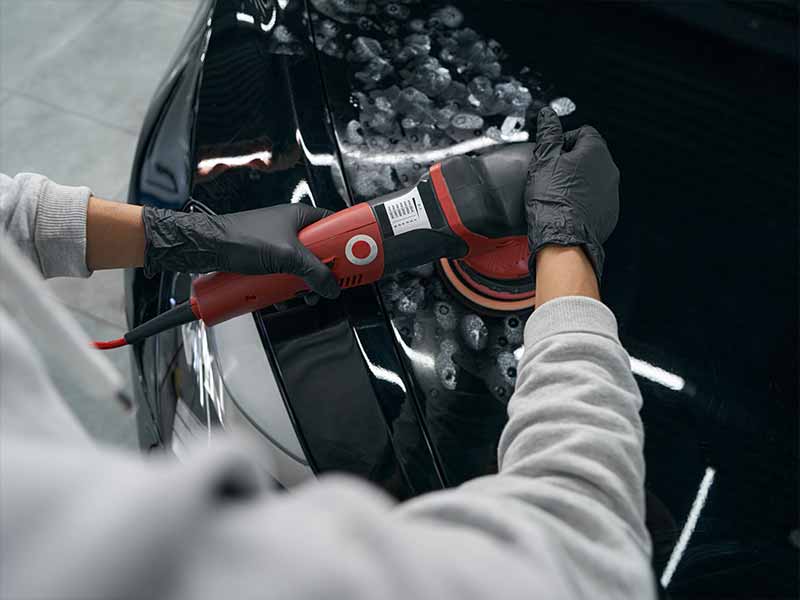Table of Contents
- How To Buff Out Scratches On Car Paint
- Types of Car Scratches
- Can Buffing Remove Car Scratches?
- Car Scratch Fingernail Test
- How to Buff Out Light Scratches in Car Paint
- What Causes Light Scratches on Cars?
- How Much Does It Cost to Have a Scratch Buffed Out on a Car?
- How Do I Get Rid of Deep Scratches on My Car?
- How Long Does It Take to Buff Out Scratches on a Car?
- Conclusion
As a car owner, one of the worst feelings in the world is when you get a scratch on your vehicle. It doesn’t matter if you have an old or new car, a scratch is just as frustrating and unattractive. There is also the risk of long-term damage, so what do you do?
How To Buff Out Scratches On Car Paint
- Apply two to three thin and even layers of polish or car scratch remover using a microfiber towel
- Allow each layer to completely dry before you apply the next layer
- Use a clean microfiber cloth to remove the dried product from the scratched area
- Repeat the process until the area has been repaired and is clean
Depending on the severity and depth of the scratch, you have some options available. Below, we will identify the different types of scratches and share with you how you can buff out scratches on your car so it looks as good as new!
Types of Car Scratches
Every type of car scratch is unique in its own nature. However, as a car owner, it is important that you understand the different types of car scratches, how to identify them, and whether the car scratches can be removed easily.
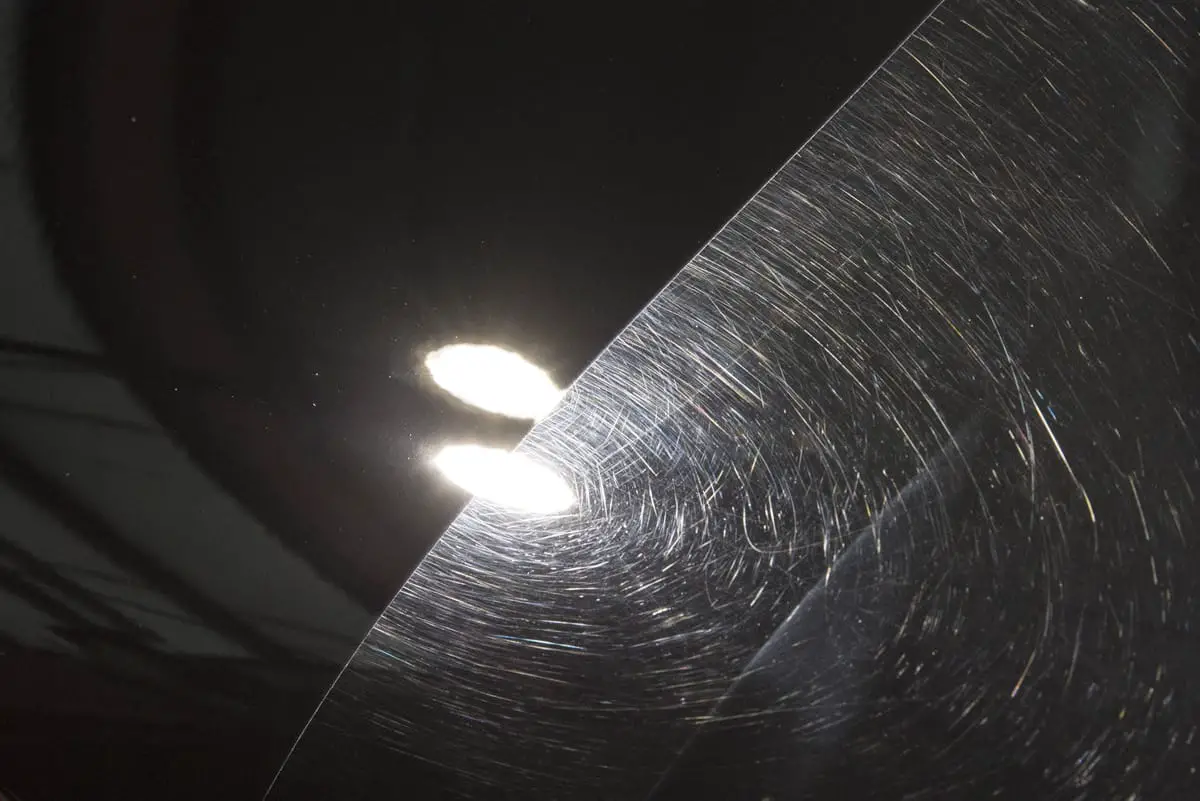
Clear Coat Scratches
Your vehicle has a thin, clear layer of protective coating on its outer surface that is designed to protect the car’s paint from rainwater, hail, dust, ultraviolet rays, and other environmental elements that can potentially cause damage to the paint.
If the clear coat has just barely been nicked and the paint itself has not been exposed yet, then you are likely dealing with a clear coat scratch. This type of superficial scratch is easy to remove and can usually be done DIY.
Exposed Paint Color Scratches
An exposed paint color scratch is a bit more serious than a clear coat scratch. This type of scratch has reached the paint just below the clear coating.
Over time, the paint will be worn down by environmental elements like sun exposure until the only thing left is the primer, or base coat. This creates the perfect place for dust, dirt, and other debris to build up, further creating the potential for even more scratches to occur on your car.
Exposed Primer (Base Coat) Scratches
This is the deepest and worst type of car scratch you can deal with. In addition, it is hardest to repair. These scratches eat away at the paint itself as well as the primer. A primer scratch will usually result in exposed bare metal, which can rust easily if exposed to moisture for extended periods of time.

Can Buffing Remove Car Scratches?
Buffing can remove some car scratches. It will depend on the severity of the scratch and how deep the scratch is. In other words, it is going to heavily depend on what layer of coating or paint the scratch has penetrated.
You can buff out clear coat and exposed paint color scratches as long as they aren’t too deep or severe. This process shouldn’t take too long—again, as long as the scratches aren’t too deep or severe.
Keep in mind that deep paint scratches as well as exposed primer scratches can be hard to buff out with standard waxing and polishing compounds due to the fact that they are so severe. In order to remove a deep paint/primer scratch, you will need to move on to other repair options like painting.
Car Scratch Fingernail Test
Every scratch is different, although you will want to get rid of them all. In order to do this, though, you must first know how severe the scratch is. You can’t always tell the extent of the damage by simply looking at the scratch.
The good news is it is incredibly simple to determine the severity of an auto scratch. You just need one tool, and it is readily accessible to everyone: your fingernail.
All you need to do is run your fingernail along the scratch on your vehicle. As you drag your nail over the scratch itself, take note of how deep it is. If your nail doesn’t catch on the scratch and seems to be thinner than a piece of paper, then the scratch has likely only penetrated the car’s clear coat. This is great because you are only dealing with a minor scratch!
However, if your nail catches on the scratch and seems to be thicker than a piece of paper, then it is one of the deeper scratches that penetrates through more than just the clear coat and into the paintwork and possibly even the primer (base coat).
Based on the information above, along with this fingernail scratch, you should be able to determine how deep the scratch is and address it accordingly in terms of what scratch removal product would be best used to remove scratches.

How to Buff Out Light Scratches in Car Paint
Buffing is a special technique that can be used to remove light to medium scratches that appear on your vehicle’s exterior. In order to remove these scratches, you will need to use a polishing compound or apply rubbing compound.
Before you begin buffing out any scratches, it is important to understand that the buffing process removes a thin layer of the car’s paint. This is true whether you do it by hand with microfiber towels or with a buffing pad and dual action polisher. As you work in a circular motion, the swirl marks, scuff marks, and scratches are removed and you are left with a shiny and smooth surface.
The good news is that clear coat scratches are one of the easiest types of auto paint scratches to repair. You will first need to purchase a quality polish or car scratch remover that is best suited for your paint type and color.
When it comes time to work on your vehicle, wash your vehicle thoroughly and dry it completely with a microfiber cloth. Mark off the scratched area with some masking tape, if necessary. This can help ensure that you don’t buff any area that doesn’t need it.
For optimal results, you should apply two to three thin and even layers of polish or car scratch remover using a microfiber towel. Make sure to allow each layer to completely dry before you apply the next layer. This particular paint repair technique allows for any kind of haze on the surface of the paint to dissipate before moving on and also increases the chance of a smoother finish when you’re done.
Make sure to use a clean microfiber cloth to remove the dried product from the scratched area. If necessary, you can repeat the process until the area has been repaired and is clean.
Once you polish or buff the fine scratches out, use a quality car wax afterward. This will help to eliminate any imperfections that may be caused by improper washing and drying and lock in the overall shine. Finally, buff the wax into the paint and ensure it dries completely before you put your vehicle in the garage.

What Causes Light Scratches on Cars?
There are many things that can cause a scratch on a car, but when it comes to fine scratches (which are clear coat scratches), it is general everyday wear that tends to cause these small scratches on the car’s finish. For instance, a scratch can occur when you are driving down a road and get too close to the side where bushes or tree limbs may scratch the outer surface of the car.
Clear coat scratches may also occur if you barely bump something with your car door (often the case with a pole, wall, or shopping cart). If you attempt to wash your vehicle with an abrasive sponge, the clear coat can suffer scratches.
Depending on the location of the surface scratches on your car, they may also be caused by your keys as you fumble to get them into the car door lock, luggage as you try to get it into the trunk, etc. Further, clear coat damage can occur from acid rain, bird poop, and road debris.
How Much Does It Cost to Have a Scratch Buffed Out on a Car?
The cost of professional scratch repair will vary depending on the extent of the damage as well as your location. For instance, to buff out a minor or light scratch, such as a clear coat scratch, you will likely only pay up to $150 or so.
The cost will continue to go up more the more serious the scratch is and the deeper the scratch goes into the levels of the car’s surface. You may find yourself paying $2,000 to $2,500 to have a deep paint scratch repaired and even more if there is exposed metal requiring a full repair.
Just keep in mind that you can cause the price of scratch repair to go up if you attempt a DIY fix and make the scratch worse. This is why many people choose to simply go the professional repair route as opposed to the DIY repair route unless they have some kind of auto repair or detailing background.
How Do I Get Rid of Deep Scratches on My Car?
Since buffing will generally not do the trick when it comes to removing deep scratches on your vehicle, you may be curious about how you can get rid of deep, heavy scratches on your car. Usually, the best option is to consult with a professional auto body shop.
However, if you are looking for a do-it-yourself option, then your best option will be to use some touch-up paint for those deep scratches. It is recommended to have some level of experience in auto paint repair to avoid worsening the problem.
If you decide to tackle the DIY task of scratch removal for deep, heavy scratches on your car, then you will want to ensure that your vehicle is washed and dried thoroughly before you begin.
The process is as follows:
- Sand down the edges of the scratch so that it no longer catches your fingernail
- Clean with rubbing alcohol to remove any oils or anything that might prevent touch up paint from adequately adhering
- Layer touch-up paint, allowing it to dry well between layers until the touch-up paint is layered higher than the surface of the original paint
- Wet sand or compound the touch-up paint layers down until you can run your finger across the area and the transition from the touch-up paint and the original paint is smooth
- Apply 2 layers of clear coat touch up with a small amount of overlap onto the original paintwork
- Wet sand or compound the clear touch up so that it is level with the original car’s paint
- Clean again with rubbing alcohol
- Polish the entire panel
ChrisFix on YouTube does an excellent breakdown of the entire process. I highly recommend you watch the following video to get a detailed explanation of precisely what is involved with each step.
How Long Does It Take to Buff Out Scratches on a Car?
If you are just buffing out minor scratches, you won’t spend more than a couple hours on them. However, if you have some medium scratches or deeper scratches to buff out or if there are a significant number of scratches you need to address, then you may spend up to a few days buffing out the scratches completely.
Conclusion
It can be extremely scary and frustrating to discover a scratch on your car’s paint job, but it is usually fixable. Scratches happen to even the most cautious car owners.
More often than not, if you are dealing with light to moderate scratches, it is entirely possible to buff them out yourself at home. However, if the scratch has reached the primer level of the paintwork or there is any exposed metal, it is recommended to have a professional address the problem as soon as possible.
